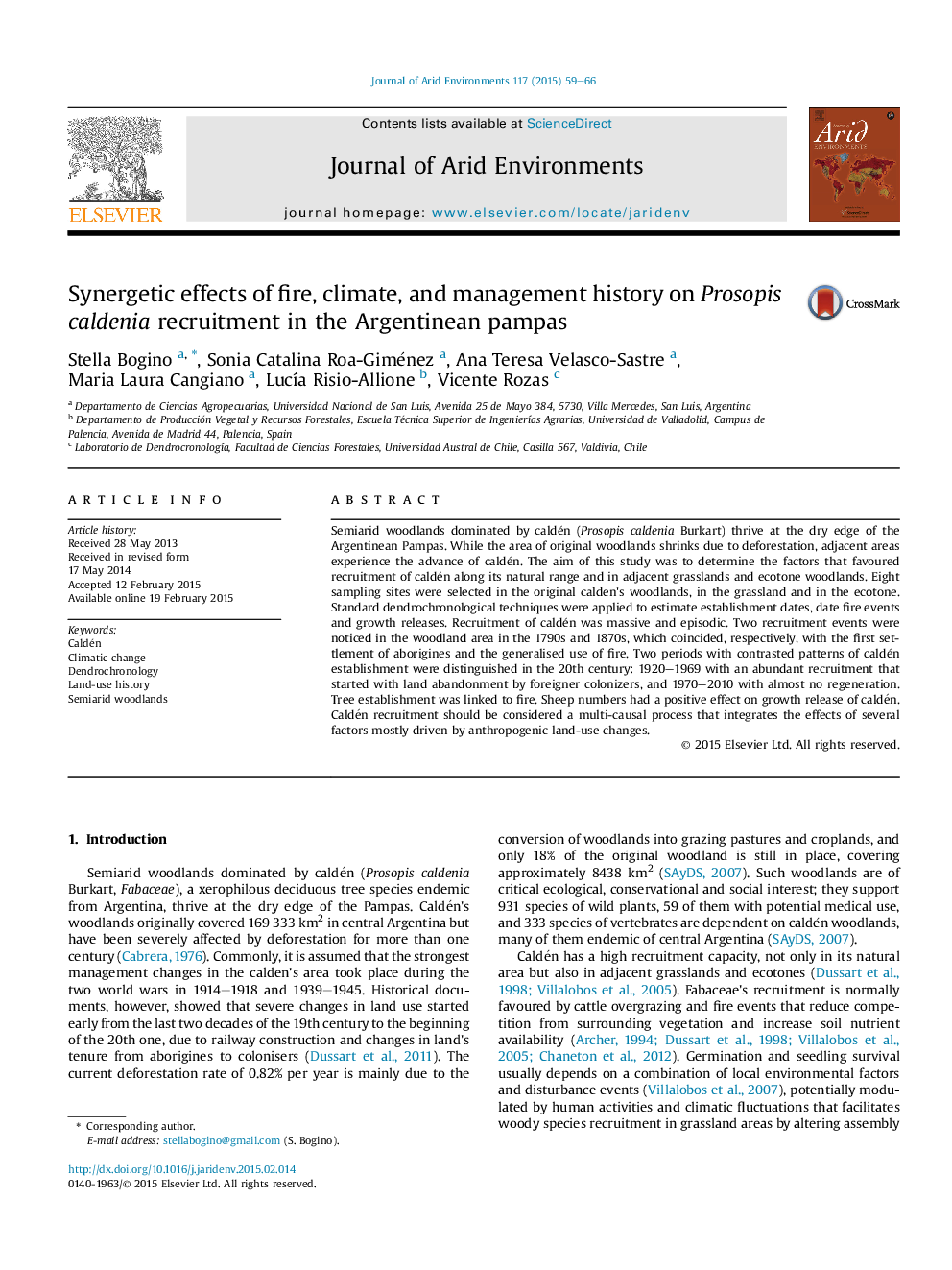| Article ID | Journal | Published Year | Pages | File Type |
|---|---|---|---|---|
| 4392856 | Journal of Arid Environments | 2015 | 8 Pages |
Abstract
Semiarid woodlands dominated by caldén (Prosopis caldenia Burkart) thrive at the dry edge of the Argentinean Pampas. While the area of original woodlands shrinks due to deforestation, adjacent areas experience the advance of caldén. The aim of this study was to determine the factors that favoured recruitment of caldén along its natural range and in adjacent grasslands and ecotone woodlands. Eight sampling sites were selected in the original calden's woodlands, in the grassland and in the ecotone. Standard dendrochronological techniques were applied to estimate establishment dates, date fire events and growth releases. Recruitment of caldén was massive and episodic. Two recruitment events were noticed in the woodland area in the 1790s and 1870s, which coincided, respectively, with the first settlement of aborigines and the generalised use of fire. Two periods with contrasted patterns of caldén establishment were distinguished in the 20th century: 1920-1969 with an abundant recruitment that started with land abandonment by foreigner colonizers, and 1970-2010 with almost no regeneration. Tree establishment was linked to fire. Sheep numbers had a positive effect on growth release of caldén. Caldén recruitment should be considered a multi-causal process that integrates the effects of several factors mostly driven by anthropogenic land-use changes.
Related Topics
Physical Sciences and Engineering
Earth and Planetary Sciences
Earth-Surface Processes
Authors
Stella Bogino, Sonia Catalina Roa-Giménez, Ana Teresa Velasco-Sastre, Maria Laura Cangiano, LucÃa Risio-Allione, Vicente Rozas,
